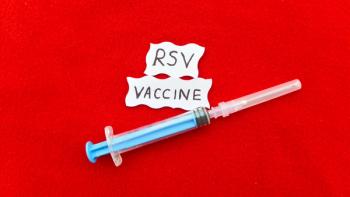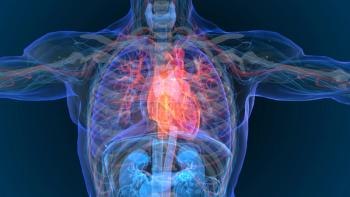
Study Links MUC1-C to Estrogen Receptor Expression and Endocrine Resistance in HR+/HER2– Breast Cancer
Key Takeaways
- MUC1 gene upregulation leads to resistance in HR+/HER2– breast cancer, affecting therapy outcomes.
- MUC1-C proteins interact with estrogen receptors, preventing their degradation and promoting cancer progression.
Studies suggest that prolonged activation of MUC1-C encourages disease progression.
Study findings published in npj Breast Cancer found that upregulation of the MUC1 gene leads to resistance to endocrine therapy (ET) and CDK4/6 inhibitors in patients with hormone receptor-positive (HER+)/human epidermal growth factor receptor 2-negative (HER2–) breast cancer (BC). The authors suggest that anti–MUC1-C antibody drug conjugates (ADCs) can inhibit the survival, self-renewal, and tumorigenicity of MUC1-C proteins.1
HR+/HER2– BC is the most common BC subtype and is identified in approximately 70% of all diagnoses. HER2 mutations are associated with worse disease and poorer outcomes, often resulting in increased therapy resistance and recurrence of disease. There are various agents that are used in standard treatment of HR+/HER2– BC, including ET and CDK4/6 inhibitors. Despite the success, many patients develop resistances to these therapies.1,2
MUC1 is a gene responsible for supporting placental development and protecting barrier tissues, such as those lining the breast. It encodes the protein MUC1-C, which, when activated, contributes to wound repair inflammatory, proliferative, and tissue remodeling pathways. Although these responses are typically reversible, chronic inflammation can lead to sustained MUC1-C activation, which in turn promotes cancer progression.1
MUC1 is frequently overexpressed in HR+/HER2– BC and is associated with poorer outcomes, as well as resistance to ET and CDK4/6 inhibitors. Studies show that MUC1-C directly interacts with estrogen receptors (ER) to suppress ubiquitylation and degradation of ERs, leading to their continued survival. Studies suggest that prolonged activation of MUC1-C promotes cancer progression. With this in mind, the authors investigated the potential use of MUC1-C-targeting ADCs for patients with HR+/HER2– BC who develop resistance to ET and CDK4/6 inhibitors.1
The authors used various HR+ BC cell lines (MCF-7, T47D, and ZR-75-1), including engineered lines with ER mutations, and cultured them under standard and hormone-deprived conditions. They used small molecule inhibitors and gene-silencing techniques (shRNA) to study the effects of MUC1-C and other related proteins. Protein and gene expression were analyzed through immunoblotting, qRT-PCR, and RNA sequencing.
Functional assays, including colony formation, tumorsphere growth, and cell viability testing, assessed treatment effects. Protein interactions were studied via co-immunoprecipitation, and flow cytometry was used to examine cell surface markers. In vivo efficacy of anti-MUC1-C ADCs was tested in xenograft and patient-derived tumor models in mice.1
The TCGA BRCA dataset revealed that MUC1 is significantly upregulated in ER-positive (ER+) compared with ER-negative (ER–) and in HER2+ compared with HER2– BCs. MUC1 levels were higher in ER+/HER2− tumors compared with normal breast tissue and ER−/HER2− tumors. MUC1 expression also correlated strongly with the estrogen receptor gene (ESR1) and its target genes TFF1 and MYB.1
In HR+/HER2– BC cells, silencing MUC1-C led to a significant reduction in ER expression and suppression of both early and late estrogen response gene signatures. Notably, ER target genes TFF1, MYB, and BCL2 were also downregulated with MUC1-C inhibition.1
These findings highlight MUC1-C as a key regulator of estrogen signaling and proliferation in HR+/HER2− BC, particularly in endocrine-resistant disease. Continued studies are needed to validate MUC1-C as a potential therapeutic target but may support the development of anti-MUC1-C ADCs.
REFERENCES
1. Nakashoji A, Bhattacharya A, Ozawa H, et al. MUC1-C dependency in drug resistant HR+/HER2− breast cancer identifies a new target for antibody-drug conjugate treatment. npj Breast Cancer. April 26, 2025. Accessed May 21, 2025. doi:10.1038/s41523-025-00751-w
2. Cancer stat facts: Female breast cancer subtypes. National Cancer Institute. Accessed May 21, 2025. https://seer.cancer.gov/statfacts/html/breast-subtypes.html
Newsletter
Stay informed on drug updates, treatment guidelines, and pharmacy practice trends—subscribe to Pharmacy Times for weekly clinical insights.




















































































































































































































